Key takeaways:
- Drone mapping enhances spatial data collection, contributing to sustainable practices and informed environmental decisions.
- Effective map critiques promote accuracy, user experience, and innovation, emphasizing clarity, specificity, and balanced feedback.
- Collaboration and community engagement lead to more relevant mapping outcomes, highlighting the importance of local perspectives and storytelling.
- Challenges like data quality, weather conditions, and communication barriers underscore the need for flexibility and trust in mapping projects.

Overview of drone mapping
Drone mapping has revolutionized the way we gather and analyze spatial data. With the ability to cover large areas quickly, drones capture high-resolution images that provide detailed insights into landscapes. I remember the first time I watched a drone survey a rugged terrain; it felt like witnessing the future of mapping unfold right before my eyes.
The technology behind drone mapping involves various components, including GPS, cameras, and sophisticated software for processing data. Just imagine the thrill of seeing aerial views transform into 3D models, offering a fresh perspective on our surroundings. This can spark emotions of wonder and appreciation for the beauty of our world, don’t you think?
What strikes me most is how drone mapping can contribute to sustainable practices and informed decision-making. I once participated in a project that aimed to monitor vegetation growth in a local park using drone technology. It was incredibly fulfilling to see how the data collected enabled us to create informed strategies for conservation. Isn’t it fascinating how these small flying machines can have such a significant impact on our environmental stewardship?
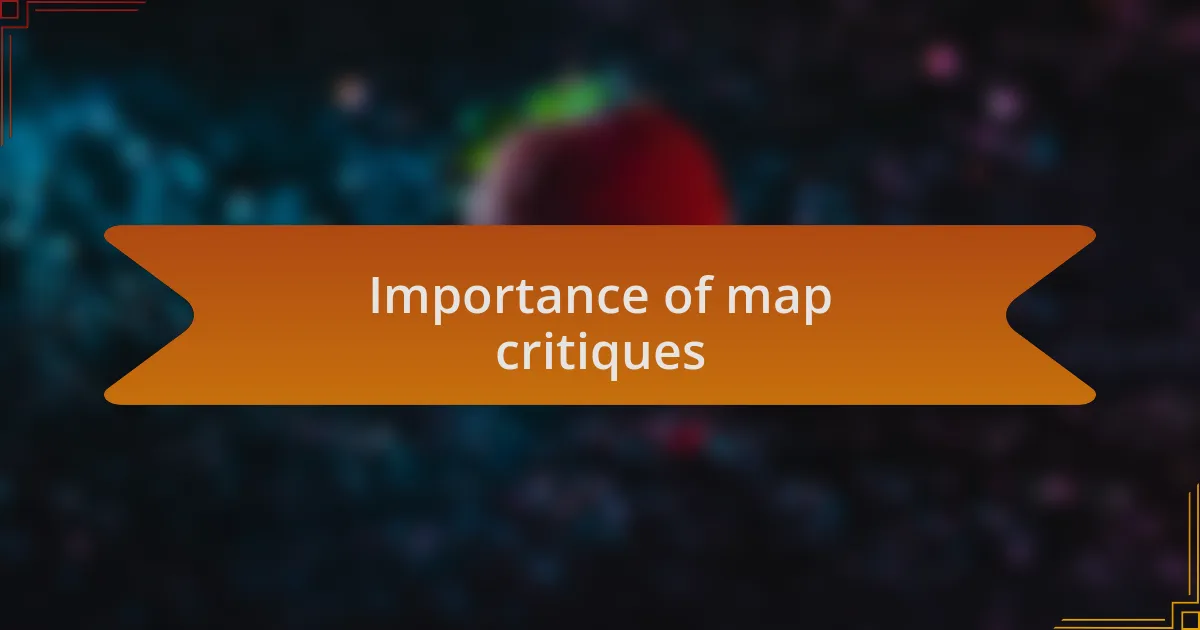
Importance of map critiques
Critiquing maps is essential because it promotes accuracy and precision. I vividly recall a time when I overlooked a minor detail on a map that led to incorrect data interpretation in a project. That experience taught me that even small errors can have significant consequences. How can we ensure the reliability of our information if we don’t take a moment to examine every aspect critically?
Another key reason for map critiques is to enhance user experience. I often think about the way users interact with maps—what seems intuitive to one person may confuse another. By gathering feedback and assessing user navigability, we can create maps that serve everyone, not just a select few. Isn’t it amazing how feedback can foster inclusivity in our mapping efforts?
Finally, map critiques encourage innovation. Every time I have analyzed a mapping project, I found myself inspired to think creatively. I discovered new ways to visualize data or represent information more effectively. Isn’t it invigorating to know that by engaging in good critiques, we are not just improving existing maps but also paving the way for groundbreaking ideas in the field?
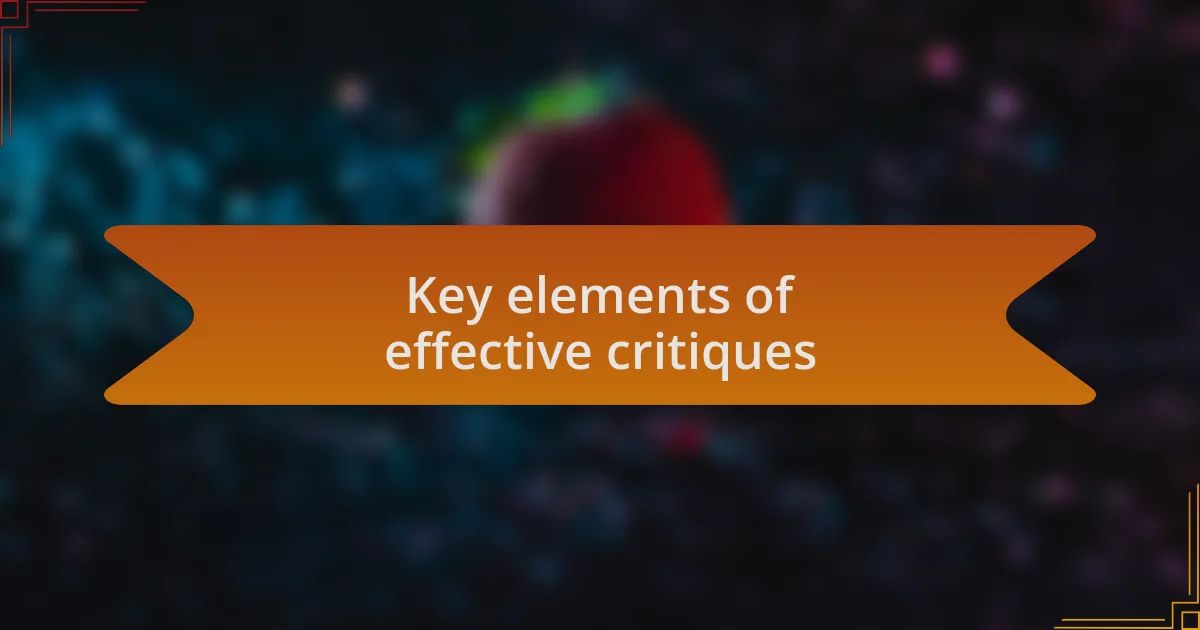
Key elements of effective critiques
One of the key elements of effective critiques is clarity in communication. I remember a situation where I provided feedback on a mapping project but failed to articulate my concerns clearly. The result? Confusion reigned, and my suggestions went unheeded. It reinforced for me that our critiques must be concise and straightforward, allowing others to grasp our insights without second-guessing. Have you ever found yourself lost in vague feedback? I have, and it’s an eye-opener.
Another vital aspect is specificity. During a recent review of a drone mapping project, I was amazed at how pinpointing particular issues—like color choices or scale discrepancies—led to tangible improvements. By being detailed in our critiques, we avoid generic comments that can derail constructive dialogue. Isn’t it interesting how a simple note about the color scheme can spark a cascade of creativity and thoughtfulness in map design?
Lastly, embracing a balance of positive and negative feedback is crucial. I once focused heavily on what was wrong with a map and neglected to acknowledge its strengths. The response was defensive rather than receptive, leaving me realizing that reinforcing positive aspects encourages openness to critique. How can we foster a collaborative environment if we only highlight flaws? Striking that balance can transform constructive criticism into a shared journey of growth.
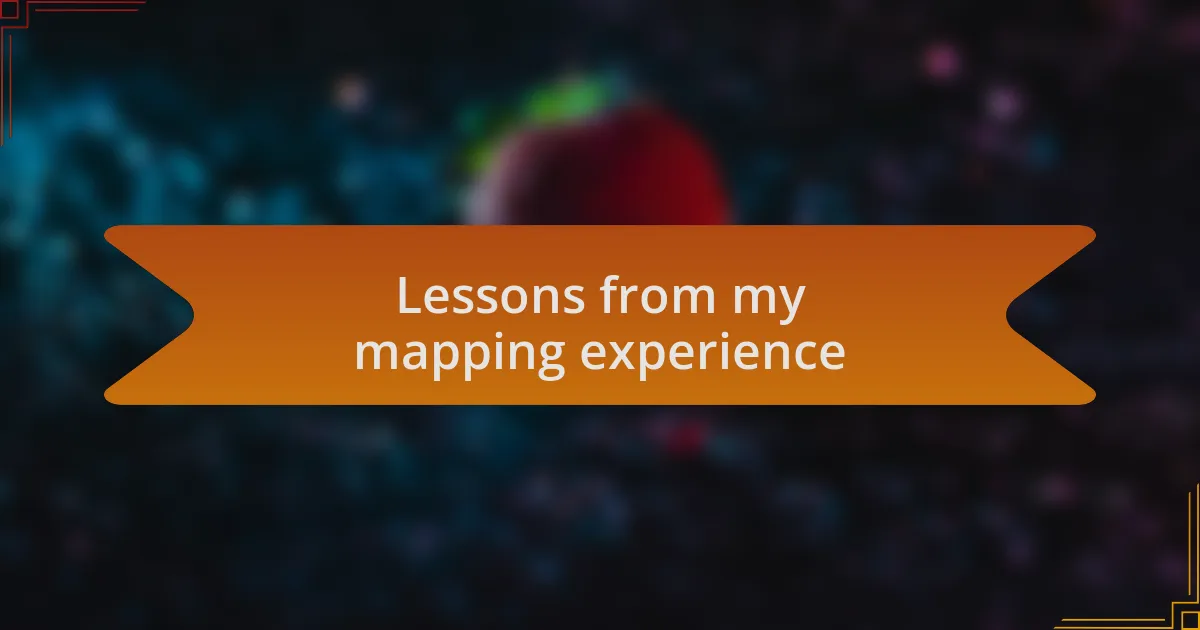
Lessons from my mapping experience
When reflecting on my mapping experiences, I’ve realized the importance of context. I recall a project where I rushed through the assessment without understanding the broader story behind the data. The maps, while technically sound, didn’t resonate because they lacked narrative context. Have you ever looked at something and felt it was missing that spark? That lesson taught me to dig deeper, to ask questions that reveal the layers beneath the surface.
Another significant insight came from collaboration. In one mapping session, my team and I brainstormed ideas together, and our varied perspectives led to the most innovative solutions. I was surprised by how a simple conversation can illuminate issues I hadn’t considered. It made me appreciate the power of diverse viewpoints and the richness they can bring to a mapping project. Isn’t it fascinating how stepping back to listen can lead to breakthroughs?
Lastly, I’ve learned to embrace the critical moment of reflection after a critique. Initially, I would jump straight into adjustments without processing feedback fully. But I discovered that taking a step back to ponder what I had learned often unveiled new approaches I hadn’t anticipated. Have you ever found clarity in a quiet moment of reflection? I have; it’s those pause points that truly enhance my mapping journey.
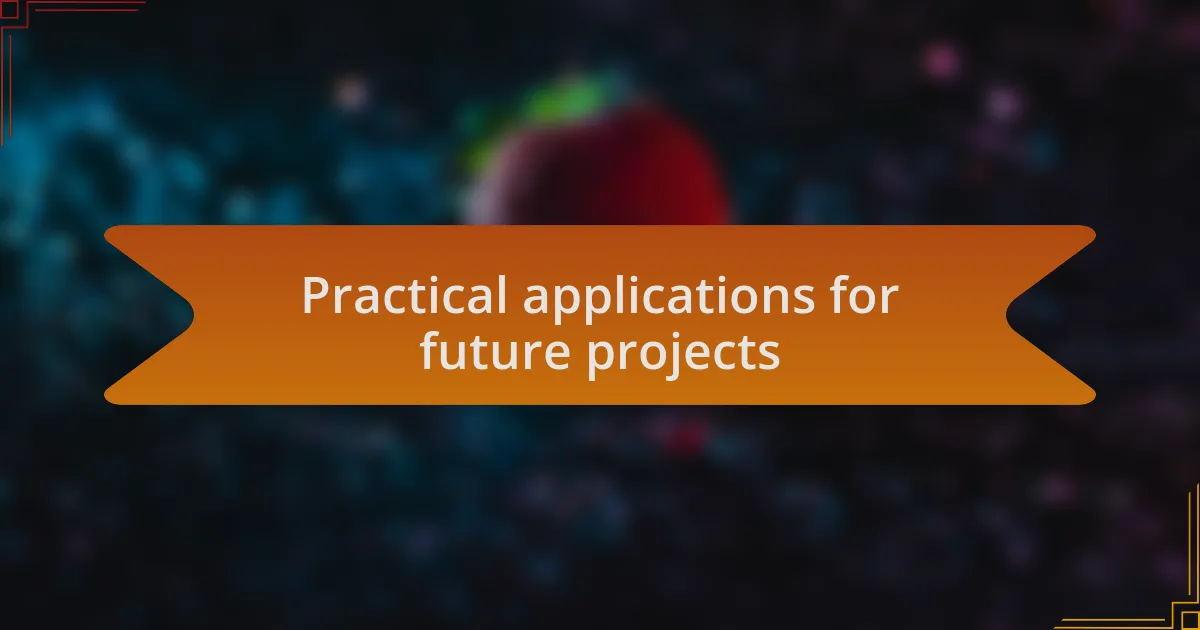
Practical applications for future projects
Recognizing the impact of user feedback from my map critiques has reshaped my approach to future projects. During one instance, I implemented suggestions from local stakeholders, which not only improved the map’s usability but also heightened community engagement. This experience made me realize that actively involving those who will use the maps creates a dynamic that can lead to richer, more relevant outcomes. Have you ever considered how valuable user input can be in shaping your work?
Another area I’ve identified for practical application is the integration of storytelling into my mapping projects. I experimented with narrative-driven maps in a recent project, weaving local myths into geographic features. The result was a more immersive experience for users, fostering a deeper connection to the land. It taught me that maps can be more than just data; they can be a canvas for cultural expression. How often do we overlook the potential of storytelling in our work?
Finally, harnessing technology for real-time data collection has immense potential. I recall piloting mobile apps that allowed community members to contribute data instantly, transforming my maps into living documents. This hands-on approach not only gathered valuable insights but also empowered the community to take ownership of their represented spaces. Wouldn’t it be incredible if every mapping project included such interactive elements?

Challenges faced during mapping
Mapping in Zanzibar presented a series of unique challenges that I hadn’t fully anticipated. One significant hurdle was navigating the varying quality of data sources. I found that not all information was reliable, which made me question how I could trust what I was putting on the map. This realization echoed in my mind as I sifted through varying reports and local insights.
Another challenge I faced was the unpredictable weather conditions. One afternoon, while collecting data, a sudden downpour forced us to halt our work. I vividly remember standing under a makeshift shelter, realizing that environmental factors could significantly delay progress. Have you ever experienced how nature can turn plans upside down at the last minute?
Lastly, I encountered difficulties in communicating effectively with local communities. In some instances, language barriers hindered collaboration. I often wondered if I was truly capturing the essence of what residents wanted to express about their land. This experience taught me that building rapport and trust is just as crucial as the technical aspects of mapping. Wouldn’t it be powerful if we could find ways to bridge those gaps more effectively?
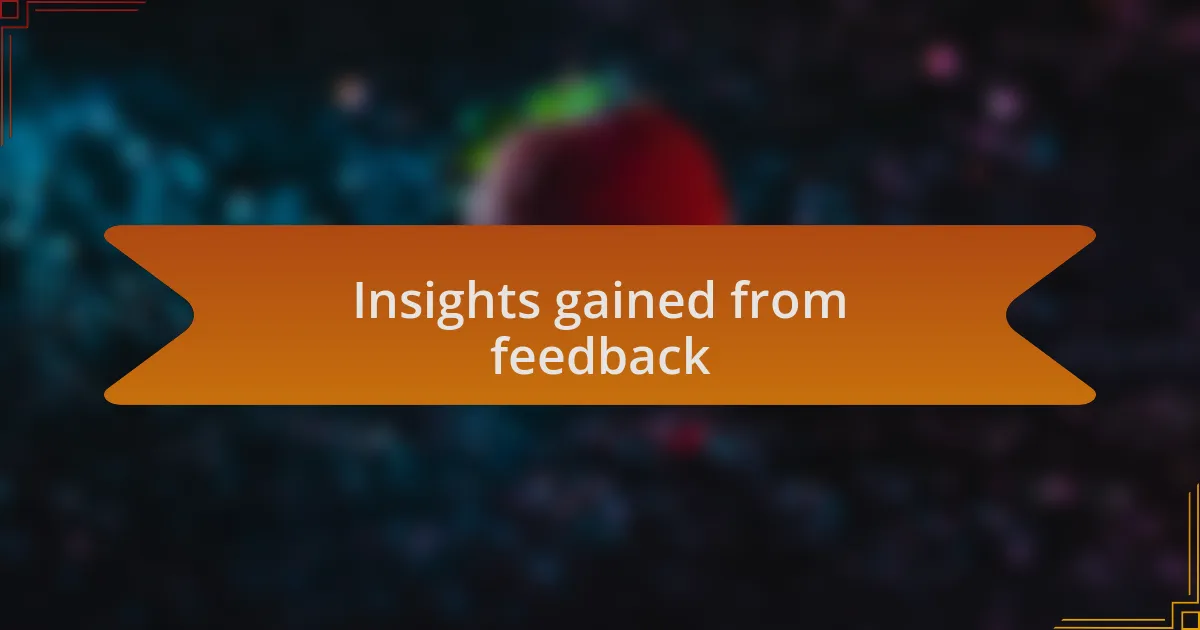
Insights gained from feedback
Receiving feedback on my mapping efforts has been a transformative experience. For instance, one comment from a local resident opened my eyes to features I had completely overlooked. They pointed out a historic site that held deep significance for the community, which made me realize that understanding local perspectives is invaluable. Have you ever overlooked something simply because it didn’t fit your expectations?
Additionally, consistent input from my peers highlighted areas of my data presentation that were confusing or needed more clarity. At first, I felt defensive, but as I embraced their suggestions, I saw my maps evolve into more relatable and user-friendly tools. This process reminded me that constructive criticism can be a pathway to improvement. Isn’t it interesting how vulnerability can lead to growth?
Lastly, engaging with the community not only enriched the mapping process but also enhanced my understanding of cultural context. On one occasion, I was invited to a local gathering where people shared stories tied to the land. This experience deepened my appreciation for their relationship with the environment and made me more passionate about accurately representing their narratives. How empowering it feels to connect with the heart of a place, don’t you think?